White House Farm was previously known as Esole Farm until the early 1900’s. The present farmhouse appears to be a mid to late 15th century hall type house which was later extended, probably in the late 16th century, to give it its present appearance and size. The farm was part of the Manor of Essesole and can be identified in the manorial roll of 1501, unfortunately there is as yet no definite identification of the farm from other older documentary sources.
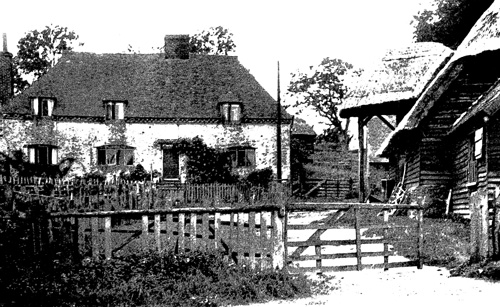
The 1501 roll records the farm as follows: “The heirs of John Castell hold half an acre in their messuage (house and outbuildings) between the Common Way twds the E & N (the present Easole Street and Beauchamps Lane respectively) and land of Wm Boys twds the W and land of Simon Quylter twds the S (now two bungalows and Four Limes) rendering thence yearly 2d (to the Lord of the manor, at this time the Abbot of St. Alban’s)”. The late John Castell had also owned some 15 acres of land on the manor for which he had to pay five shillings and a half-penny annually in manorial rent as well owing suite of court (attending the manorial court) every three weeks. His heirs would have had to pay one years rent to the Abbot on inheriting the house and land.
The farm was sold to the Boys’ of Fredville at sometime in the early 1500’s and it became part of the large East Kent land-holdings. At some time in the early to mid 1500’s the original timber framed house was extended and became a residence of younger sons of the family. The timber frame was also enclosed in brick most probably in the latter part of the 16th century. Holt Street farmhouse was re-built in brick around 1600 to 1605 and was the residence of Edward Boys, son and heir to Edward Boys of Fredville. The brick work on both houses is very similar, especially the corbelling, so Esole farmhouse may have been brick clad at around the same time as Holt Street farm house was re-built. The aisled barn that runs along Beauchamps Lane is tarred weatherboard over a timber frame laid upon brick [possibly originally flint] foundation walls and probably originally dates from the early 1600’s.
Major John Boys of Fredville was is in constant financial difficulties during the 1650’s and 1660’s and, according to William Boys’ 1802 biography and pedigree of the Boys family, “by his own extravagance he much encumbered and wasted the estate of Fredville”. The Major used various parts of his estates as security for loans and mortgages. In 1658 he mortgaged various holdings, including Esole Farm, for £1,550.00 to Thomas Turner, his brother-in-law. This mortgage was renewed in 1668, but the debt was never re-paid and Esole Farm came into the possession of the Turner family and in 1698 William Turner, Esq., of Gray’s Inn, London, leased the farm to William Payne, a yeoman of Nonington, for seven years for an annual rent of £40.00, rising to £50.00. “Easole ffarme” then consisted of a “messuage or ffarmhouse at Easesole in Nonnington with barns &c. lands arable meadow & pasture containing by estimation 100 acres now in occupation of John Austen. Also one piece of arable land containing by estimation 30 acres in Nonnington between Easesole alias Yessallhole there and a certain ffarm called Kettington alias Kethampton now also in occupation of said John Austen”.
The lease was renewed again in 1705 and in 1707 the lease was amended to include “8 pieces of land contg. about 16 acres lying in a ffield called Yesole ffield (Easole Field, the large open fields on either side of Mill Lane) in Nonington purchased by Wm Turner of Wm. Hammond Esq (part of East Stoole farm)-rent increased £8”. William Payne, also Paine, continued to lease the farm from the Turner family until October of 1717 when it was let to Judith Payne, his widow, for a further seven years.
In 1753 Esole Farm was included in the marriage settlement when Bridget Turner, of White Friars in Canterbury, married David Papillon, sole son and heir to David Papillon, Esq., of Acrise in Kent. The farm remained with the Papillon family until sometime in the early 1800’s when it came into the possession of the Hammonds of St. Alban’s Court.}
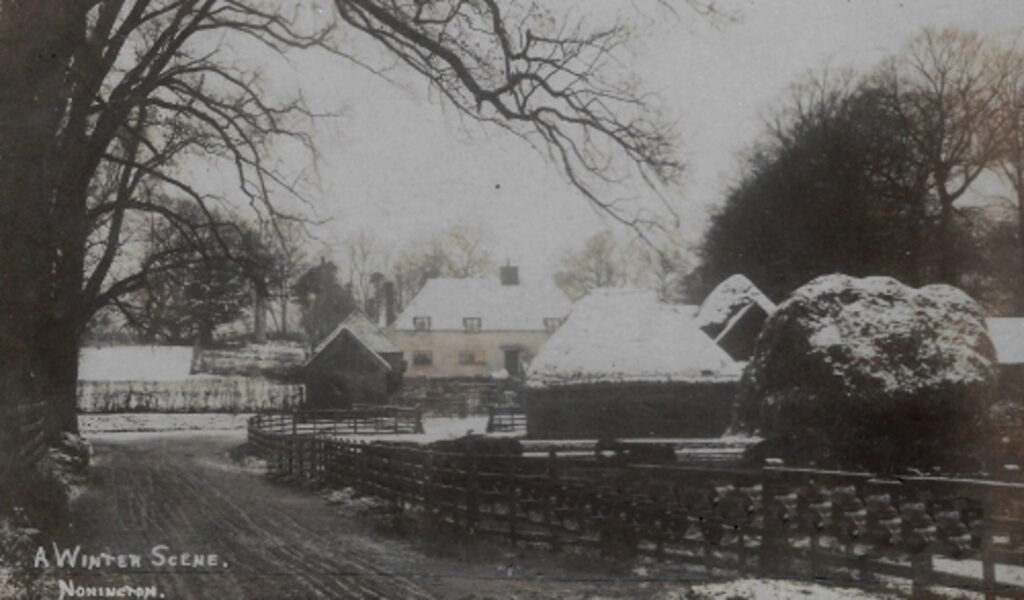
The 1861 census records Esole Farm as being St. Alban’s Farm, owned and farmed by W.O. Hammond, Esq., of St. Alban’s Court. The farmhouse was at the time listed as being two dwellings. Thomas Fagg, the farm bailiff, lived in one part, and Henry Castle, a carter on the farm, in the other.
A decade later the 1871 census listed the farm house once again as a single dwelling where farm bailiff Frederick Atwood lived with Thomasin Gilham, an elderly widow who acted as his house-keeper.
In 1901 George Garlinge, a brother of my paternal great-grandmother Lydia Rogers, was the working farm bailiff living there.

Easole, Farm was a part of the St. Alban’s estate until 1938 when along with the neighbouring Home Farm and Church Farm it was bought by a member of the Vestey family. The Vestey fortune had been founded on South American beef in the early 1900’s. The three farms had been leased from the 1920’s by Mr. Harry Crawford, whose Scottish father, David, had been the St Alban’s estate land steward [first referred to in the 1881 census as living in Home Farm House on the Sandwich Road].
The three farms were owned by the Vesteys for some years, and later came into the possession of the three Barwick brothers.

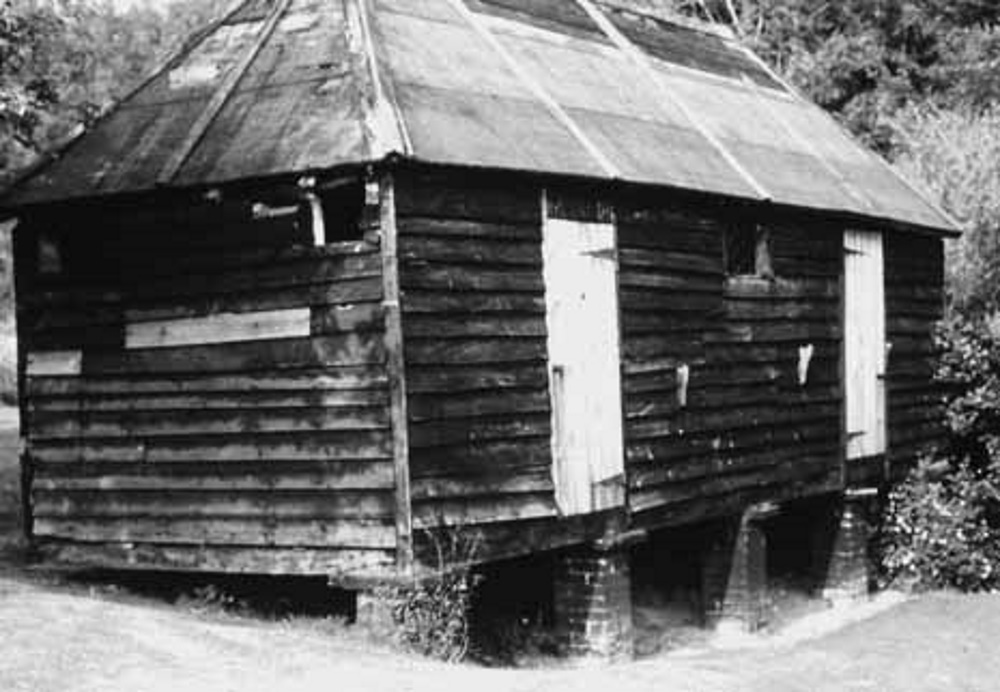


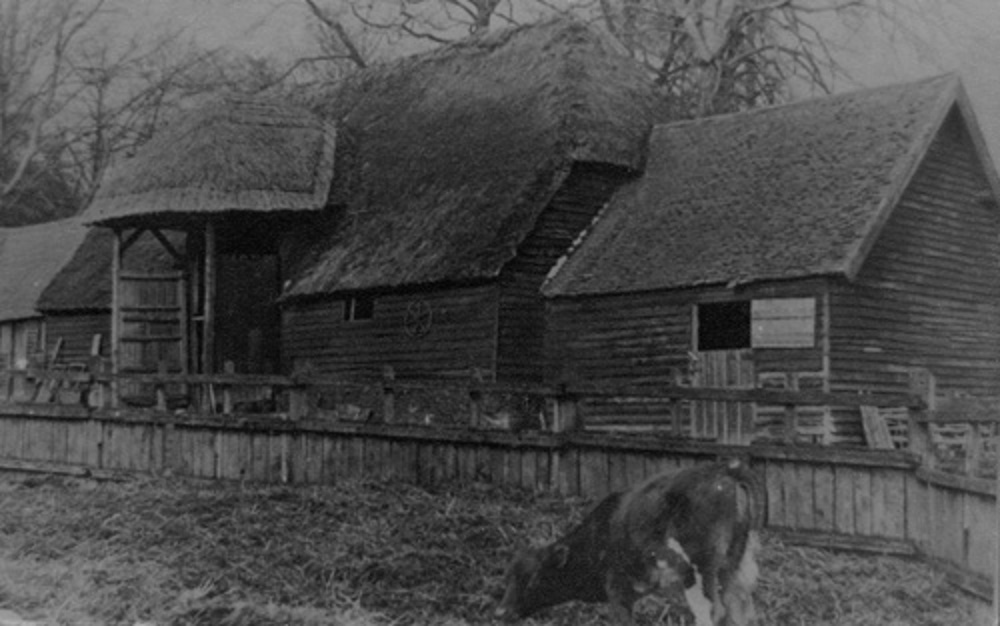

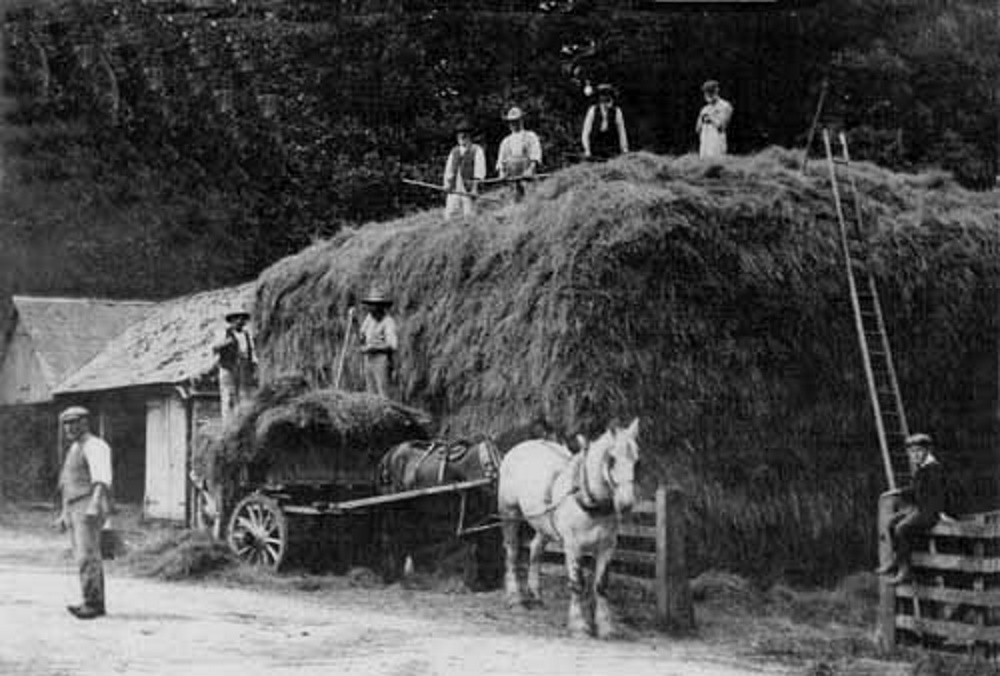

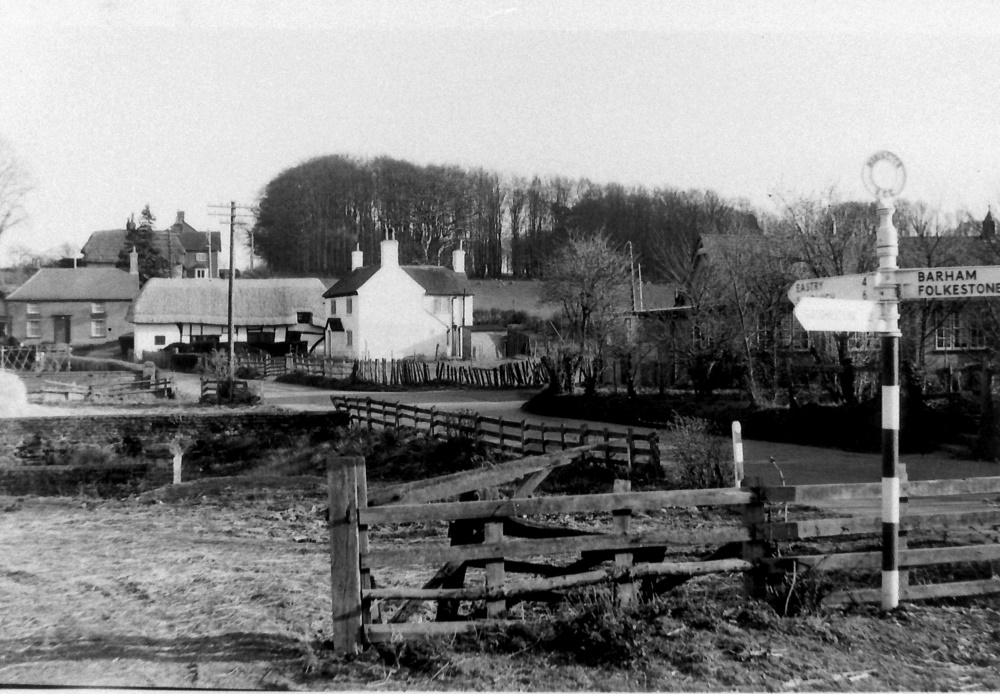
The Three Barwick brothers, Nonington farmers.
The following information regarding the ownership by the Barwick family of WhiteHouse, Church, and Home Farms in Nonington was passed on to me by John Barwick, Wilf Barwick’s eldest son. I have amended the information and added my own notes:
Joseph Barwick was a Mongham born farmer who owned several farms in East Kent. He took on the tenancies of Church Farm and White House Farm in Nonington circa 1940 and purchased Home Farm in Nonington around 1952. Soon after purchasing Home Farm he retired to Mongeham where later he passed away aged 99. On his father’s retirement Edward “Ted” Barwick, his son, rented Home Farm from his father and continued to do so for several years before buying the fam from his father. Within a year or so of Victor’s retirement White House Farm and Church Farms were put up for sale and Wilfred Barwick bought White House Farm and at the same time Victor Barwick bought Church Farm.
Wilf’s land at Whitehouse Farm in Easole.
The White House Farm land in the 1950’s appears have be very similar to that attached to the farm in when it was owned by the Papillons and their predecessors, the Boys of Fredville.
From Beauchamps Lane to Vicarage Lane. This area was a part of the Becham’s manor house and lands which belonged to the Boys family of Fredville and referred to in 1501 St. Alban’s Court manorial roll as being divided into several plots.
To the south of Mill Lane. This was the southern half of the Esole Fields referred to 1501. The area was then divided into numerous small plots owned by various people.
The field to the east of the road from the top of Mill Lane to the Elvington turning. This is Mill Field which had also belonged to the Boys family.
The field from the Village Hall to Leafy Lane, also Sleigh Lane. This field also belonged to the Boys family as part of their Bechams holding until they had to sell Esole Farm. A coach road from Sandwich Road to the Boys’ Fredville Mansion ran across this field.
He also rented Harvey’s field on the left of Mill Road. Part of the Esole Fields to the north of Mill Lane.
Wilf was an arable farmer, but also grew potatoes and in the yard where White House Court now stands, he kept beef and John, his son kept pigs.
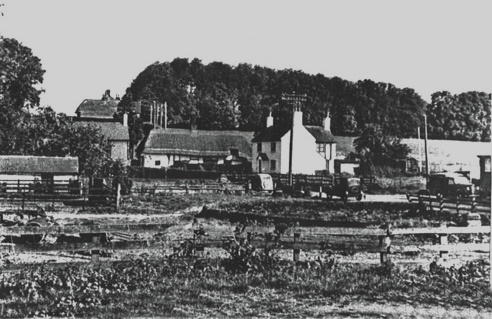
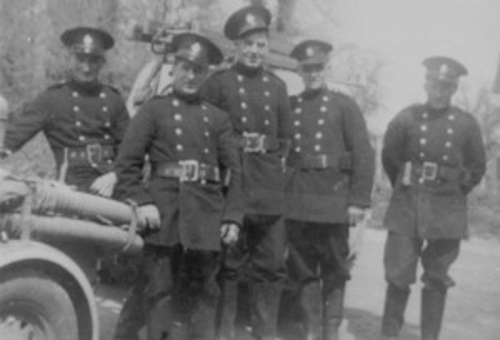
The garage by White House Farm was the base for the war time fire brigade (Home Guard), and all three Barwick brothers were involved in that.
Mill View in Easole Heights was built for Wilfred and he lived there prior to moving to White House Farm. He was married to Marion, and they had four children…Jean (deceased), John, Christopher and Rupert. All of Wilf’s children were born at White House Farm.
Home Farm and White House Farm were sold together in 1974, to Sir Dermot Humphrey de Trafford, 6th Baronet, VRD, FRSA and managed by Mr. Roddy Loder Symonds of Denne Hill, Womenswold. Church Farm was sold in 1977.
On retirement, Wilf purchased Fairview on Butcher’s Lane, also Butcher’s Alley, where he could still see the farm that he loved so much.
Ted’s land at Home Farm on the Sandwich Road in Easole.
The farmhouse was Home Farm on the Sandwich road.
The Ruins [not including Beauchamps Wood], the site of the Esol, later Becham’s, manor house.
Pinner’s Hill, including the old Church Lightlands.
To the north of Mill Lane. This was the northern half of the Esole Fields referred to in the 1501 St. Alban’s Court manorial roll . The area was then, and until into the 19th century, divided into numerous small plots owned by various people.
The land between Home Farm and St. Alban’s Court, later Nonington College of Physical Education.
The Old St. Alban’s Court dairy, where new houses have been built on by the old house.
Ted combined arable with dairy, he was married to Edith and they had two girls….Eileen and Sandra (known as Sue). After retirement Ted move out of Nonington.
Vic’s land at Church Farm on Old Court Hill in Nonington.
Victor or Vic, farmed at Church farm, and all of his farming was arable.
His land was along both sides of Church Street as far as the railway line. On the west side from St Mary’s Close to the railway line. On the east, from behind Church Farm in a line up to the top of the hill south across Old Court Hill , also Shop Hill, across to Chapmans Hill and on to the railway line.
Along the west side of Pinners Lane, and a small acreage on the east.
Vic was married to Evelyn (Eva), and they had three girls…Jill. Lorna(deceased) and Sheila. They lived for many years in Church Farm House.
Vic later built a bungalow along Church Street which was built on the site of the old Poor House Cottages in Church Street. It was called “Jubilee” because he sold Church Farm in 1977. Vic eventually moved to Sandwich.

